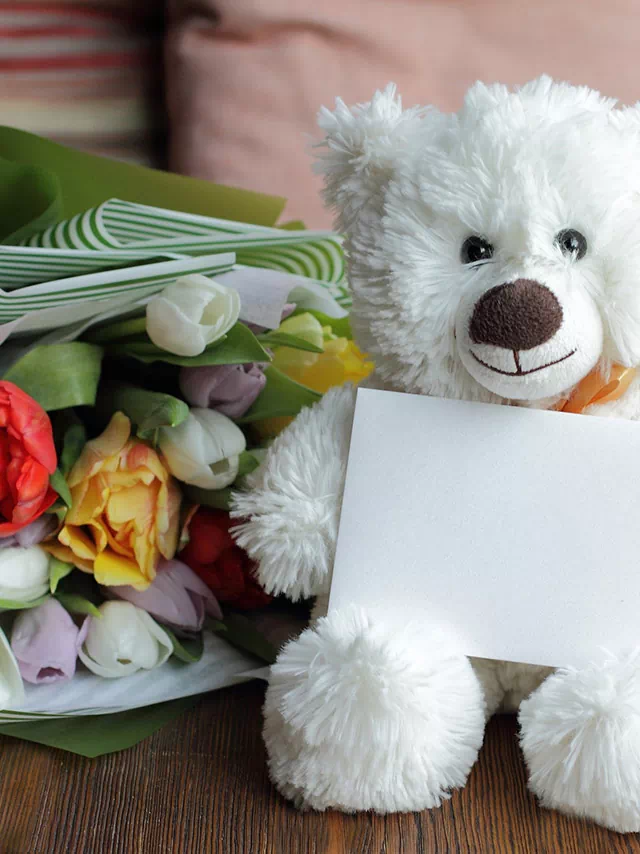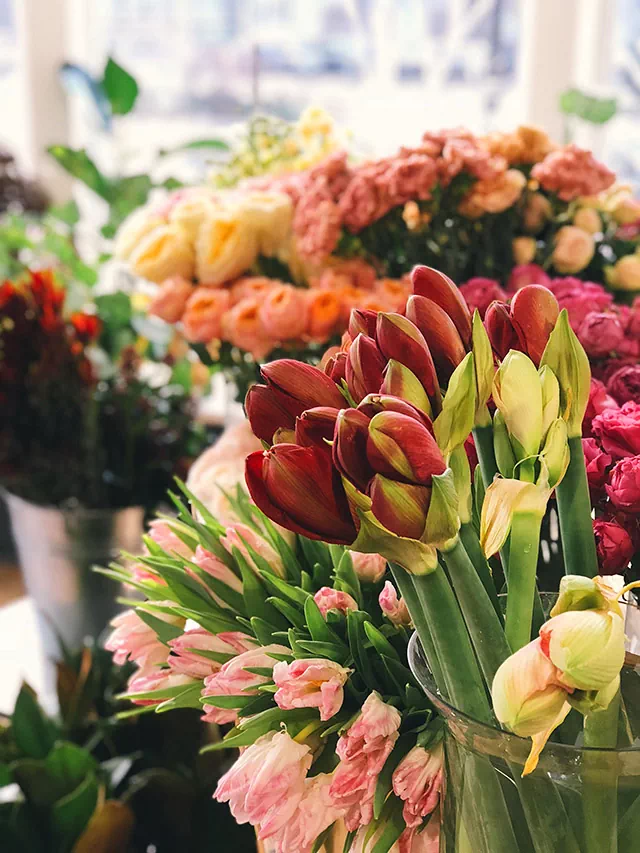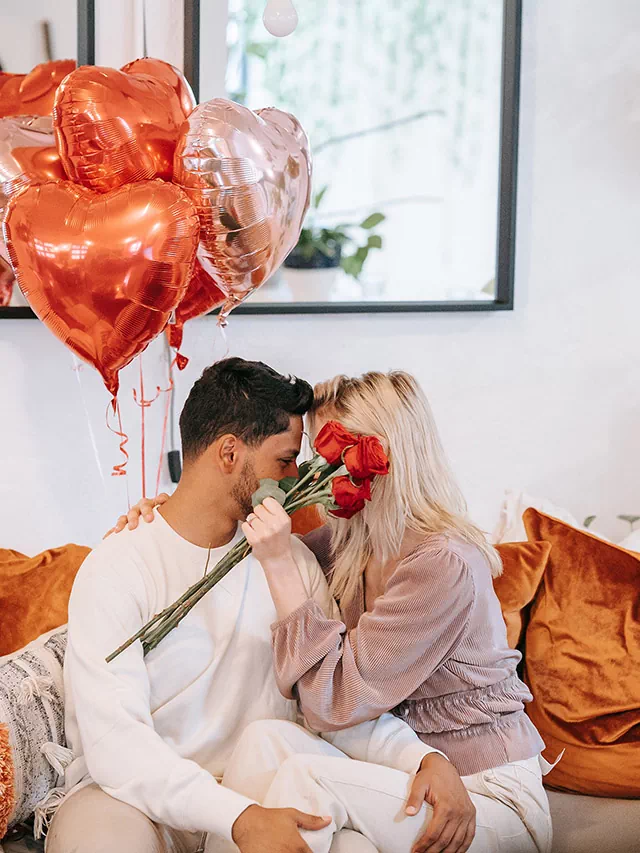Talking to your partner about sex is an important and necessary aspect of any healthy and satisfying relationship. However, many people find it difficult or uncomfortable to bring up the topic. It is understandable that discussing sex can feel intimidating, but open communication about sexual desires, preferences, and boundaries is essential to creating a fulfilling sexual relationship. Effective communication can strengthen the emotional and physical intimacy between partners and help them explore their sexual desires and fantasies. In this context, it is important to approach the topic with sensitivity, empathy, and respect. In this article, we will discuss some tips on how to initiate and navigate a conversation about sex with your partner in a constructive and positive way. These tips will help you create a safe and comfortable environment where both you and your partner can express your feelings and desires openly and honestly, leading to a stronger and more fulfilling sexual relationship.
Choose the right time and place
Choosing the right time and place to talk about sex is crucial. You want to make sure that you’re both comfortable and able to speak freely without any distractions. This means finding a private setting where you won’t be interrupted or overheard. You might want to plan ahead and set aside some time specifically for this conversation. It’s also important to make sure that you’re both in a good frame of mind and not too stressed or distracted. You don’t want the conversation to feel rushed or tense.
Approach the conversation with curiosity and openness
Talking about sex can be challenging, but it’s important to approach the conversation with curiosity and openness. Try to listen to your partner’s perspective without judgement or criticism. Be willing to share your own feelings and experiences, but also be open to learning more about your partner’s preferences and desires. You might be surprised by what you discover.
Use “I” statements
When discussing sexual issues, it’s important to use “I” statements instead of “you” statements. This means focusing on your own thoughts and feelings rather than blaming or criticizing your partner. For example, instead of saying “You never initiate sex,” you could say “I feel like I’m always the one initiating sex, and it would be nice if we could share that responsibility more evenly.”
Be specific
If you want to improve your sex life, it’s important to be specific about what you want or need. Vague or general complaints are unlikely to be helpful. Instead, try to identify specific areas where you feel like you could use some improvement. This might involve discussing specific acts or behaviors that you’d like to try, or talking about ways to make sex more enjoyable for both of you.
Listen actively
When your partner is speaking, try to listen actively and pay attention to their perspective. Don’t interrupt or dismiss their feelings, even if you don’t agree with them. Try to ask questions and clarify anything that you don’t understand. This will help you to build a better understanding of your partner’s desires and needs.

Be patient
It’s important to be patient when talking about sex with your partner. You might not be able to resolve all your issues in one conversation, and that’s okay. It’s important to keep the lines of communication open and continue to work on your sexual relationship over time. Try to approach the conversation as a process of exploration and discovery, rather than trying to achieve a specific outcome.
Practice active listening
Active listening involves not only hearing what your partner is saying, but also demonstrating that you understand and empathize with their perspective. This means paying attention to their body language, tone of voice, and any other cues that might indicate how they’re feeling. It also involves reflecting back what they’ve said to ensure that you’ve understood it correctly. For example, you might say “What I hear you saying is that you feel like we’re not having enough sex, is that right?” This shows your partner that you’re listening and that you care about their perspective.
Avoid blame and criticism
It’s important to avoid blaming or criticizing your partner when discussing sex. This is likely to put them on the defensive and make it harder for them to open up. Instead, focus on expressing your own feelings and needs in a non-judgmental way. For example, instead of saying “You’re not satisfying me sexually,” you could say “I feel like I’m not getting what I need sexually, and I’d like to explore some ways to make things better for both of us.”
Be willing to compromise
Improving your sexual relationship is likely to involve some compromise on both sides. Be willing to listen to your partner’s perspective and consider their needs and desires, even if they’re different from your own. Look for ways to find common ground and to meet each other’s needs in a mutually satisfying way. This might involve trying new things or exploring new sexual experiences together.
Focus on pleasure and intimacy
Finally, remember that sex is about more than just physical satisfaction. It’s also a way to connect emotionally and build intimacy with your partner. Try to focus on the positive aspects of your sexual relationship, and look for ways to enhance pleasure and intimacy for both of you. This might involve experimenting with new positions, trying different types of touch, or simply spending more time connecting emotionally before and after sex.
Respect boundaries
It’s important to respect your partner’s boundaries and limitations when discussing sex. If they’re not comfortable with a particular activity or discussion, it’s important to back off and respect their wishes. Likewise, if you’re not comfortable with something, it’s important to speak up and communicate your boundaries in a respectful way. Remember, healthy sexual relationships are built on mutual respect and trust.
Don’t make assumptions
Assumptions can be a big barrier to effective communication about sex. Don’t assume that you know what your partner wants or needs, or that they’re happy with the way things are. Instead, ask questions and seek clarification to ensure that you’re both on the same page. Don’t assume that your partner is satisfied with the frequency or quality of your sex life. Ask them directly and try to work together to find a solution.
Be willing to seek outside help
If you’re having trouble communicating about sex, or if you’re struggling with sexual issues that you can’t resolve on your own, it may be helpful to seek outside help. This might involve talking to a therapist or counselor who specializes in sexual issues, or attending a sex education workshop or seminar together. Don’t be afraid to seek help if you need it. Remember, improving your sexual relationship can have a positive impact on your overall well-being and happiness.
Keep the conversation going
Effective communication about sex is an ongoing process. Don’t assume that you can solve all your issues in one conversation. Keep the lines of communication open and make an effort to check in with each other regularly. This might involve scheduling regular “check-ins” to discuss your sexual relationship, or simply making an effort to talk openly and honestly about sex on a regular basis. The more you communicate about sex, the more likely you are to create a satisfying and fulfilling sexual relationship.
Celebrate your successes
Finally, don’t forget to celebrate your successes! When you make progress in your sexual relationship, take the time to acknowledge and celebrate your achievements. This can help to build momentum and motivate you to continue working on your relationship. Remember, improving your sexual relationship is a journey, not a destination. Celebrate each step along the way and keep moving forward.
Practice self-care
Effective communication about sex also involves taking care of yourself. This means prioritizing your own physical and emotional needs and making sure that you’re in a good place to have these conversations. It may be helpful to practice self-care activities like meditation, exercise, or therapy to help manage stress and improve your overall well-being.
Consider timing and context
The timing and context of your conversations about sex can also be important. Try to choose a time and place where you both feel comfortable and relaxed, and where you won’t be interrupted. Avoid having these conversations when one or both of you are tired, stressed, or distracted. It’s also a good idea to frame the conversation in a positive way, focusing on the potential benefits of improving your sexual relationship rather than the negative aspects.
Be open-minded
Effective communication about sex requires an open mind and a willingness to try new things. Be open to your partner’s ideas and suggestions, even if they’re different from your own. Remember, sexual preferences and desires can vary widely, and what works for one couple may not work for another. Be willing to experiment and try new things to find what works best for you.
Practice consent
Consent is an essential aspect of any sexual relationship. Make sure that you and your partner are both comfortable with any activities that you engage in, and that you respect each other’s boundaries and limitations. Always ask for consent before engaging in any sexual activity, and be willing to stop if either of you becomes uncomfortable. Remember, a healthy sexual relationship is built on trust, respect, and communication.
Avoid judgment and criticism
When discussing sex with your partner, it’s important to avoid judgment and criticism. Remember that everyone has their own preferences and desires, and that there’s no “right” or “wrong” way to have sex. Instead of criticizing your partner for their preferences, try to understand where they’re coming from and find ways to meet each other’s needs.
Be patient
Improving your sexual relationship takes time and patience. Don’t expect to solve all your issues in one conversation, and don’t become frustrated if progress is slow. Be patient with yourself and with your partner, and remember that open and honest communication is a process.
Be respectful
Respect is key to any healthy relationship, including a sexual one. Treat your partner with kindness and respect, and avoid using disrespectful language or engaging in behavior that makes them feel uncomfortable or disrespected. Remember, your partner’s needs and feelings are just as important as your own.
Use humor
Using humor can be a helpful way to lighten the mood and diffuse tension during conversations about sex. However, it’s important to use humor in a respectful and appropriate way, and to avoid making jokes at your partner’s expense.
Focus on the positive
When discussing sex with your partner, try to focus on the positive aspects of your relationship. Instead of dwelling on what’s not working, focus on what is working and what you both enjoy. This can help to create a positive and supportive atmosphere, and make it easier to work together to improve your sexual relationship.
Be willing to compromise
Compromise is an important part of any healthy relationship, including a sexual one. If you and your partner have different preferences or desires, be willing to find a middle ground that works for both of you. This may involve trying new things or adjusting your expectations.
Don’t make assumptions
Assuming you know what your partner wants or needs can lead to misunderstandings and miscommunication. Instead of assuming, ask your partner directly what they want or need from your sexual relationship. This can help to avoid misunderstandings and ensure that you’re both on the same page.
Avoid distractions
When having conversations about sex, it’s important to avoid distractions like phones or television. Make sure you’re both fully present and engaged in the conversation, and that nothing is taking away from your focus.
Seek professional help if needed
If you’re struggling to communicate effectively about sex, don’t be afraid to seek professional help. A therapist or counselor can help you and your partner work through any issues and develop better communication skills.
In conclusion, talking to your partner about sex can feel daunting, but it is an essential part of building a healthy and satisfying relationship. By approaching the topic with sensitivity, empathy, and respect, you can create a safe and comfortable environment for open and honest communication about sexual desires, preferences, and boundaries. Effective communication about sex can strengthen the emotional and physical intimacy between partners, leading to a more fulfilling sexual relationship. Remember to be patient and understanding, and to follow up with your partner to ensure that both of you are on the same page. By using these tips, you can improve your communication skills and strengthen the bond between you and your partner, leading to a happier and healthier relationship.













